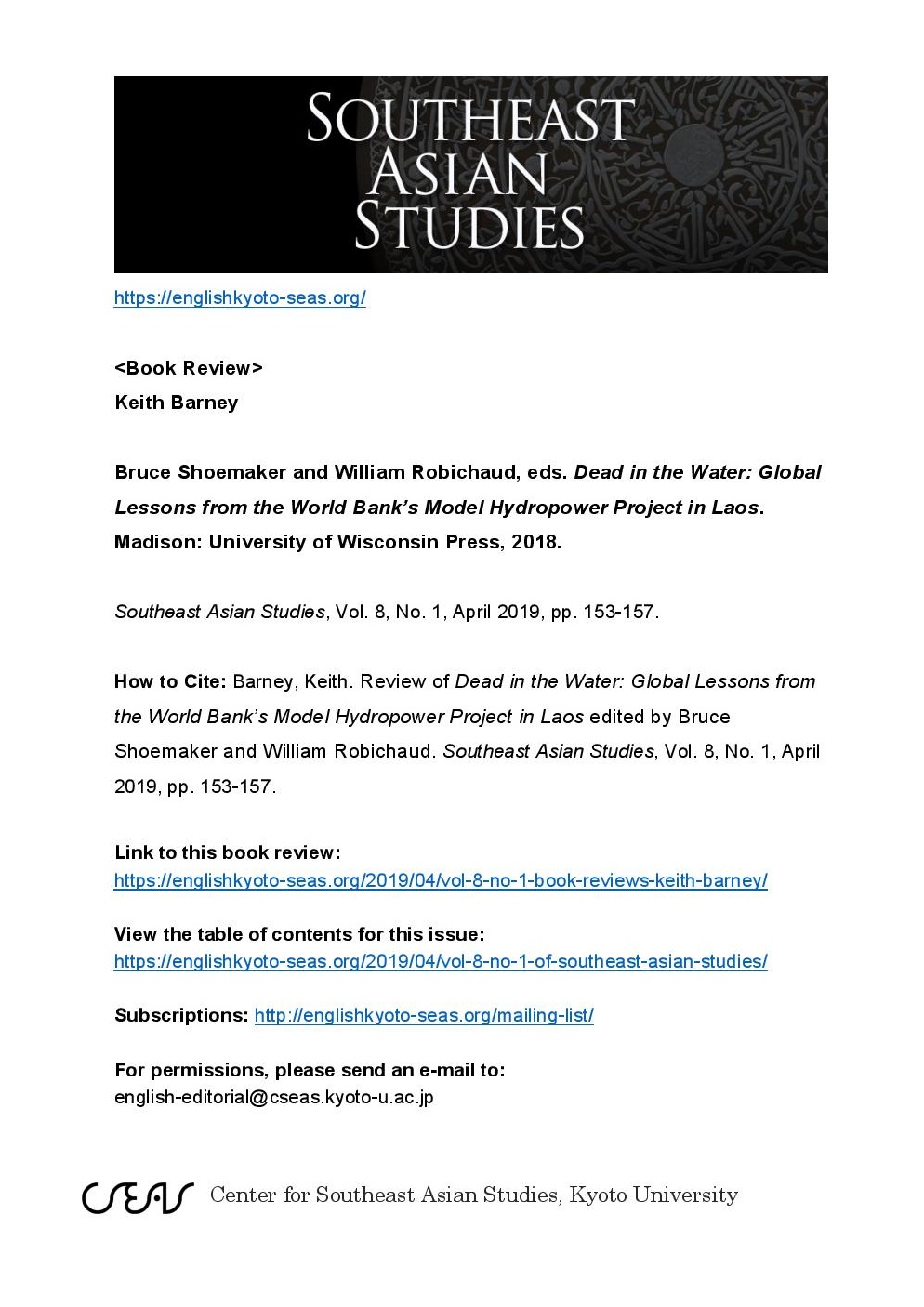IN THE NEWS: "Book Review 'Dead in the Water: Global Lessons from the World Bank’s Model Hydropower Project in Laos' from Singapore Journal of Tropical Geography"
/By Vanessa Lamb [Singapore Journal of Tropical Geography]
In 2024, Laos PDR (‘Laos’) is set to move beyond ‘least developed country’ status. This, according to the UN Special Rapporteur on extreme poverty and human rights, is a significant accomplishment. The Rapporteur, however, also notes that ‘behind this apparent success story lies a more complicated and problematic reality’ (Alston, 2019: 1).
Enter Dead in the Water, a book that is part of a long-standing effort into comprehending key facets of this ‘problematic reality’. 1 The route taken is via one of the highest profile poverty alleviation projects in Laos, and indeed, of the World Bank: the Nam Theun 2 (NT2) hydropower dam.
***
Read the full review here.
Carl Middleton of CSDS contributed the chapter “Branding Dams: Nam Theun 2 and its Role in Producing the Discourse of “Sustainable Hydropower”” to the book (see here)
Buy the Book: Dead in the water: global lessons from the World Bank's model hydropower project in Laos (University of Wisconsin Press, 2018)





